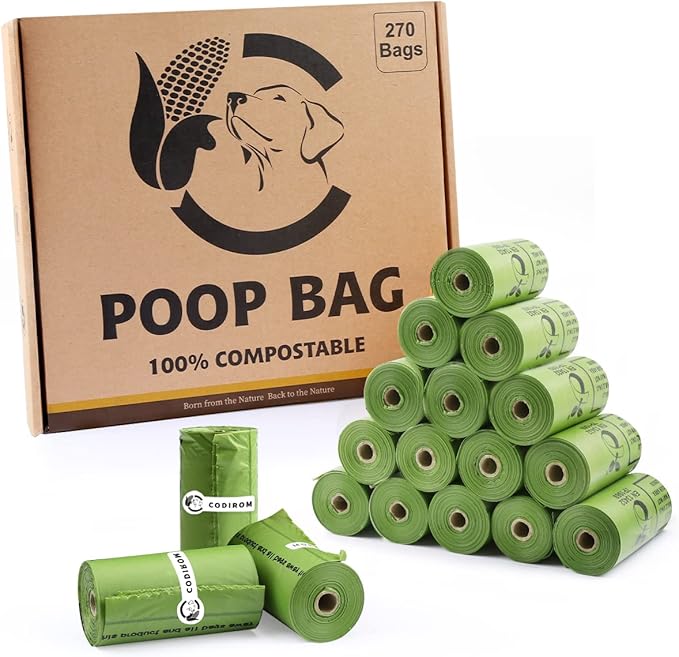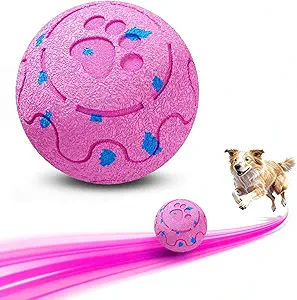The Dangers Of Using Chemical Pet Shampoos On Your Pet: Protecting Your Furry Friend with Safe Alternatives – An In-Depth Look
Over the years, I’ve seen firsthand how common grooming products can adversely affect our furry family members. It wasn’t until I started questioning the ingredients hidden in commercial pet shampoos that I truly understood the dangers of using chemical pet shampoos on your pet: Protecting Your Furry Friend with Safe Alternatives. In this comprehensive guide, I’ll share my journey and insights into why switching to eco-friendly, natural grooming solutions isn’t just a trend but a necessity for both your companion’s health and the environment.
The Origins of Concern: Why Chemical Pet Shampoos Are Problematic
I began noticing subtle changes in my pet’s behavior and skin condition. Frequent itching, dry patches, and even respiratory signs eventually prompted a deeper investigation into what these shampoos contain. Many chemical pet shampoos are loaded with synthetic additives to boost shelf life, create foam, and deliver an artificial scent; however, these additives often come at a steep cost to your pet’s overall well-being.
Unpacking the Ingredients
When I started reading product labels more carefully, I encountered ingredients that were difficult to pronounce, but even harder to understand. To help you make informed decisions, here’s a breakdown of some common components:
- Sulfates: These foaming agents strip your pet’s natural oils, leading to dry, irritated skin.
- Parabens: Used as preservatives, these can interfere with natural hormonal processes and trigger allergies.
- Artificial Fragrances: While they leave a pleasant scent, they often mask unhealthy chemicals that may cause skin reactions.
- Synthetic Additives and Preservatives: Often included to prolong shelf life, they may contribute to toxic build-up over time.
Even products advertised as “veterinarian recommended” can hide these problematic ingredients. This realization pushed me to find safer, natural alternatives that truly respect the biology of our pets.
The Dangers Of Using Chemical Pet Shampoos On Your Pet: Protecting Your Furry Friend with Safe Alternatives – Understanding the Health Risks
It’s not only about what you see on the label; the long-term health implications are substantial. I’ve observed several adverse effects after using chemical shampoos, which made me reassess my approach to pet grooming. Here’s what I learned:
Skin Irritation and Allergic Reactions
The immediate reaction many pets have is skin irritation. I witnessed first-hand how consecutive baths with chemical shampoos led to:
- Excessive scratching: Leading to raw, inflamed patches of skin.
- Rashes and hot spots: Particularly around sensitive areas like the belly and ears.
- Persistent redness: Which can indicate an allergic reaction to harsh chemicals.
Once these symptoms become evident, it’s important to discontinue use immediately and seek safer options.
Inhalation and Digestive Hazards
Another overlooked risk is the potential for chemical residues to be inhaled or accidentally ingested during bathing. This risk is amplified by the following possibilities:
- Respiratory distress: Fine chemical particles from soap bubbles can be easily inhaled, causing breathing difficulties.
- Digestive upset: Ingestion of even small amounts of these chemicals can lead to vomiting or diarrhea.
Such issues highlight the urgency to switch to non-toxic, natural alternatives to ensure every bath is safe for your pet.
Impact on Natural Skin Oils
Our pets naturally secrete oils essential for maintaining a healthy, lustrous coat. Unfortunately, chemical shampoos often strip these oils away, leaving the coat dull and the skin vulnerable. I noticed several effects including:
- Dull and lifeless fur: Without enough natural oils, coats can become lackluster and easily damaged.
- Increased susceptibility to infections: Dry skin can develop cracks, making it easier for bacteria and fungi to penetrate.
- Overall diminished resilience: A weakened coat is less capable of protecting against environmental hazards.
This is a major concern because the very barrier that keeps your pet healthy is compromised after repeated exposure to harsh chemicals.
The Long-Term Effects of Chemical Exposure: Protection Through Safe Alternatives
Beyond the immediate reactions, long-term exposure to chemicals can have profound effects on your pet’s health. Several chronic conditions have been linked with the cumulative use of chemical pet shampoos, forcing me to seek better options for my companion.
Chronic Allergies and Skin Infections
With prolonged exposure, I observed that even a healthy pet can develop chronic skin conditions:
- Persistent redness and itchiness: These symptoms can continue and worsen over time.
- Secondary infections: Open wounds from scratching may develop bacterial infections.
- Fur loss or textured changes: Over time, the affected areas of the coat can thin out or change in texture.
Respiratory Challenges Over Time
Frequent inhalation of airborne chemical residues has led to respiratory challenges in some pets I’ve encountered:
- Occasional coughing or wheezing: What starts as a minor cough can evolve into more persistent bronchial issues.
- Asthma-like symptoms: In sensitive animals, the constant exposure may trigger conditions similar to asthma.
- Long-term tissue damage: Chemicals can progressively irritate and damage the delicate respiratory system.
Endocrine Disruption and Organ Stress
Another unsettling consequence is the impact of these chemicals on internal systems:
- Hormonal imbalances: Ingredients like parabens have been tied to endocrine disruption.
- Metabolic disorders: Over time, this may contribute to obesity or lethargy.
- Reproductive issues: Some chemicals interfere with normal reproductive cycles, which is particularly concerning for breeding animals.
The evidence underscores a clear message: the dangers of using chemical pet shampoos on your pet require us to explore natural, non-toxic alternatives that protect not just our companion’s skin, but their overall quality of life.
The Natural Alternatives Approach: Protecting Your Furry Friend with Safe Alternatives
When I began exploring alternative grooming methods, I discovered a world of natural ingredients that not only clean but nourish your pet’s skin and coat. Let me share some of the most effective and safe methods.
Oatmeal: Nature’s Soothing Agent
I first experimented with oatmeal, a time-tested remedy for canine skin irritations. Oatmeal is renowned for its calming properties, which can soothe inflamed or itchy skin. Here’s how I use it:
- Step-by-Step Instructions:
- Grind plain oatmeal into a fine powder using a blender or food processor.
- Mix the powder with warm water to create a smooth, thick paste.
- Apply this paste gently over your pet’s coat, focusing on areas with irritation.
- Allow the paste to sit for 5-10 minutes to let the oats work their magic.
- Rinse thoroughly with warm water, ensuring no residue remains.
This method dramatically reduced my pet’s scratching and left the coat feeling soft and moisturized.
Coconut Oil: A Multi-Purpose Marvel
Coconut oil is another natural product that has transformed my approach to pet grooming. Here’s why it works so well:
- Moisturizing ability: It restores the natural oils stripped away by chemical shampoos.
- Antibacterial and antifungal properties: It helps ward off infections and soothe minor skin irritations.
- Enhances coat shine: A small amount can make the fur appear glossy and healthy.
I incorporate coconut oil by simply warming a small quantity and massaging it into my pet’s coat. For pets with particularly dry skin, this step has been a game-changer.
Herbal Infusions: Chamomile and Lavender for Calm and Clean
Herbs like chamomile and lavender are not just pleasing in aroma—they have been used for centuries for their soothing properties. Here’s a method I rely on:
- Step-by-Step Instructions:
- Brew a strong chamomile or lavender tea and allow it to cool completely.
- Pour the cooled tea evenly over the wet coat while gently massaging it in.
- Rinse thoroughly, ensuring that all traces of the tea are removed.
This natural rinse not only cleanses the skin but also provides a calming effect, making bath time less stressful for a nervous pet.
Additional Natural Ingredients Worth Considering
Besides oatmeal, coconut oil, and herbal infusions, several other natural substances can enhance your pet’s bathing routine. Here are a few that I regularly incorporate:
- Apple Cider Vinegar: Dilute equal parts apple cider vinegar and water to create a gentle, pH-balancing solution. It’s effective as a final rinse that helps maintain skin balance. (Be cautious to avoid contact with eyes.)
- Castile Soap: A plant-based soap that cleans effectively without harsh chemicals. Always dilute before use, and it works well for sensitive skin.
- Baking Soda: Sprinkle lightly over the coat to neutralize odors, then brush out after a few minutes. It’s an excellent natural deodorizer.
These natural ingredients have delivered noticeable improvements in my pet’s skin texture and overall coat health while reducing the risk of irritation and allergic reactions.
The Dangers Of Using Chemical Pet Shampoos On Your Pet: Protecting Your Furry Friend with Safe Alternatives – Real-World Testing
I’d like to share a personal story that underscores the importance of transitioning to natural pet care. My Golden Retriever, Max, who is now 5 years old, had been using commercial chemical shampoos for most of his life. Over time, his once glossy, healthy coat began to show signs of distress—patchy fur with dry, itchy spots and occasional coughing fits during bathtime.
Determined to make a change, I switched Max’s routine to a blend of natural ingredients. Here’s what I did:
- Oatmeal paste: Prepared a batch as described earlier and applied it gently during his bath time.
- Coconut oil massage: Massaged a small amount of coconut oil into his coat after rinsing off the oatmeal paste.
- Herbal infusion rinse: Used a cooled chamomile tea rinse approach to finish the bath.
Within just a few weeks, Max’s coat began to regain its shine and softness. His skin became less itchy, and he no longer scratched incessantly. Even his occasional bouts of coughing, which seemed linked to residual chemical irritation, subsided. This transformation was not only a win for his physical health but also reduced his overall stress during grooming sessions.
Expertise on Environmental Impact: Biodegradability and Non-Toxic Materials
From an environmental standpoint, the shift from chemical pet shampoos to natural alternatives is critical. When products are composed of non-toxic, biodegradable materials:
- Reduced Chemical Runoff: Natural ingredients break down easily, limiting the impact on local waterways and soil.
- Lower Carbon Footprint: Eco-friendly products often use sustainably sourced raw materials, reducing the energy consumed in production.
- Healthier Ecosystems: By avoiding harsh chemicals, we ensure that both domestic pets and the surrounding wildlife are exposed to fewer toxins.
This holistic approach not only benefits individual pets but also contributes to broader environmental health. When I learned about these impacts, the decision to switch became even clearer—protecting my furry friend also meant protecting the planet.
Pros & Cons: Weighing the Options
Switching to natural alternatives comes with its own set of benefits and challenges. Here’s a quick list to help guide your decision:
- Pros:
- Preserves natural oils, maintaining a shiny, healthy coat.
- Reduces skin irritations, allergic reactions, and respiratory issues.
- Uses biodegradable ingredients that are better for the environment.
- Often cost-effective with ingredients available in most households.
- Cons:
- May require more time to prepare and apply.
- Initial results might be slower than commercial options until the skin adjusts.
- Some natural ingredients can still cause reactions if not tested properly first.
Practical Pet Bathing Routines: Keeping It Safe and Natural
In my quest for safer grooming routines, I discovered that using natural ingredients is only part of the equation. The overall bathing routine plays a significant role in ensuring your pet’s safety and comfort. Below, I outline a step-by-step guide for an effective and natural bathing process.
Step-by-Step Instructions for a Natural Bath
- Step 1: Select a Safe Bathing Location
- Choose a non-slip surface, such as a secure bathtub or a specially prepared area in your garden.
- Ensure the area is shaded and comfortable, reducing stress for your pet.
- Step 2: Assemble All Necessary Supplies
- Prepare your natural shampoo ingredients (oatmeal paste, diluted apple cider vinegar solution, etc.).
- Gather soft brushes, towels, and a rinsing cup or sprayer.
- Keep a bowl of fresh water nearby in case your pet needs a quick rinse or a calming drink.
- Step 3: Introduce the Bath Gently
- Speak in a calm, reassuring tone throughout the process.
- Begin with gentle massage techniques to relax your pet and distribute natural oils.
- Step 4: Apply the Natural Shampoo Mixture
- Use your preferred natural shampoo method—whether it’s oatmeal paste or a coconut oil massage.
- Ensure you work the product into all areas, focusing on spots that typically harbor dirt or irritants.
- Step 5: Rinse Thoroughly
- Use a gentle cup or sprayer to ensure all product residues are washed away.
- Be especially careful around the ears, eyes, and underbelly to avoid irritation.
- Step 6: Dry and Reward
- Pat your pet down with a soft towel instead of harsh rubbing—this helps preserve natural oils.
- If using a dryer, ensure it is on low heat and kept at a safe distance.
- Offer a small treat or engage in playtime to positively associate the bath with a reward.
Always perform a patch test when introducing a new natural ingredient. Apply a small drop on a discreet area of your pet’s skin and observe for 24 hours. If there’s any sign of irritation, discontinue use immediately. Remember, every pet is unique—what works for one may not work for another.
The Dangers Of Using Chemical Pet Shampoos On Your Pet: Protecting Your Furry Friend with Safe Alternatives – Choosing Eco-Friendly Grooming Options
Over time, I discovered the benefits of integrating eco-friendly products into my grooming routine. By opting for products that embrace non-toxic materials and sustainable practices, the impact goes beyond individual pet wellness and extends to our ecosystem. For instance, when exploring eco-friendly dog waste solutions, I found valuable tips at this insightful resource: Eco-Friendly Dog Waste.
Choosing products with natural certifications – think organic or cruelty-free labels – further reassures that the ingredients are sourced responsibly. This shift not only protects my pet but also reduces the chemical load introduced into our water systems, soil, and even the air we breathe.
Real-World Testing: Max’s Journey to a Healthier Coat
I’d like to revisit the story of Max, my 5-year-old Golden Retriever. His initial reaction to chemical shampoos was gradual but unmistakable; his fur lost its previous shine, and he began experiencing recurring skin irritations. Determined to protect his delicate skin, I gradually transitioned him to a natural grooming routine.
Here’s how the transformation unfolded:
- Week 1-2: I introduced an oatmeal-based bath once a week, using lukewarm water and ensuring gentle massaging techniques.
- Week 3: I added a light coconut oil treatment post-bath to restore moisture and smooth out his coat.
- Week 4: To enhance the calming effect during bath time, I introduced a herbal rinse using cooled chamomile tea.
- Week 5: It became apparent that Max was more relaxed during grooming, his skin irritation lessened, and his fur started regaining a healthy glow.
Max’s experience is a striking example that the dangers of using chemical pet shampoos on your pet can indeed be mitigated with safe, natural alternatives. His story reinforces the importance of being mindful about every ingredient that comes in contact with our pets.
Delving Deeper into the Science: How Natural Ingredients Benefit Skin and Environment
Scientific research supports what many pet parents have observed anecdotally. Natural ingredients such as oatmeal and coconut oil have been shown to bolster the skin’s natural barrier, preventing excessive water loss and thereby protecting against irritants. In contrast, harsh chemicals can disrupt the skin’s microflora, potentially leading to a host of skin disorders.
Moreover, the biodegradability of natural ingredients means they break down faster than synthetic compounds, leaving fewer harmful residues in nature. This is particularly significant in today’s world where environmental sustainability is as crucial as pet health. Using natural products is a dual investment in your pet’s immediate well-being and the long-term health of our planet.
FAQs About The Dangers Of Using Chemical Pet Shampoos On Your Pet: Protecting Your Furry Friend with Safe Alternatives
What should I look for when switching from a chemical pet shampoo to a natural alternative?
Start by checking labels for ingredients you recognize and avoid those with long, synthetic names. Look for certifications like organic or cruelty-free. Always perform a patch test to ensure your pet tolerates the new ingredients.
How can natural products improve my pet’s coat and skin health?
Natural ingredients help preserve natural oils, reducing dryness, irritation, and associated skin infections. They also usually contain antimicrobial properties that support overall skin health.
<






